LEXT - High resolution 3D surface profile observation and measurement with UV-laser confocal microscopy
Exceeding resolution limits by combining UV- microscopy and confocal scanning technology
LEXT is utilising low wave length optical technology with a 408nm laser in combination with confocal scanning to exceed known resolution limits of optical imaging systems. By developing a special optical system which minimises the aberrations associated with short wavelength and maximises the transmission at 408nm Olympus achieved unequalled image quality and signal response.
The resolution power is enhanced by the confocal scanning technique. With this technique the specimen surface is scanned point by point. At the detector side (photomultiplier) a special confocal pin hole blocks all rays that are reflected from out of focus planes. The photomultiplier measures the signal intensity at each point. 3D information of the inspected surface is gathered by moving the objective in Z-direction. The Z-position (height) is measured by a precise scale. This confocal system produces intensity maps of each acquired Z layer which can be reconstructed to a 3-dimensional image.
The advanced XY scanner utilised in the LEXT - a micro-electro mechanical system (MEMS) developed by Olympus - makes the scanning process faster and results more reproducible compared to conventional scanner technologies as the moving mass is much lower. The control of Z-axis scanning is extremely precise due to the use of a linear scale with 5nm increments. For each surface point the LEXT system is calculating an intensity- (photomultiplier-) Z position curve (linear scale), called IZ-curve, enabling maximum intensity values to be accurately drawn by means of a sophisticated formula. Retention of these calculated values provides the data consistency required for high repeatability.
The result is a world-leading plane resolution which clearly recognises individual lines spaced only 0.12µm apart and 0.01µm in height, for ultra-precise measurements of the micro fabrication surfaces. All this with a remarkable reproducibility of 3? n-1 = 0.02µm (XY direction) and 3? n-1 = 0.05 + 0.002Lµm (height; L= measurement height). The reliability of the measured data is based on a strict traceability system that conforms to the standards of the Japan Quality Assurance Organization, the Physikalisch-Technische Bundesanstalt, Germany and the United Kingdom Accreditation Service.
Precise 3D measurements - just a mouse click away
Unlike many other systems on the market which can only be operated by real experts LEXT sets new standards in usability and measuring speed by a unique operation and display concept. Only LEXT has a 2 channel live image display with the possibility to show both - a conventional coloured microscope image and a confocal image - in parallel on the screen. Focusing on the specimen surface and finding the desired position is as easy and fast as with a conventional microscope. After the scan area had been defined by focusing on the top and on the bottom surface of the specimen the scan process is running automatically.
To allow the scan of specimens with different reflection characteristics, such as the substrate surface and copper wiring surface of a printed substrate LEXT is equipped with an enhanced mode by which these kinds of specimen can be captured clearly. The same feature can detect slanted samples which are difficult to reflect laser, which are problematic for conventional 3D measuring equipment.
Once the 3D data had been acquired numerous measurement functions are available to analyse the shape of the surface. Height, distance, angle and volume can be easily extracted and documented.<
Surface roughness measurements - easier interpretation, higher reproducibility
Compared to tactile roughness testers LEXT allows measuring the roughness not only on one line but on an area. The precise definition of the area of interest can be done directly on the height image which is displayed on the monitor. Interpretation of roughness results is getting much easier as the surface can be displayed in 3 dimensions. LEXT offers various possibilities to separate surface, waviness and roughness. Roughness data are provided in accordance with the latest international standards.Automated measuring procedures for statistic process control
The optional motorised scanning stage enables automated image acquisition and measuring on several points of the specimen. Image acquisition and measuring procedures can easily be stored by a macro recorder. The stage navigator allows the programming of predefined grids or individual point settings so that LEXT can be efficiently used for statistic process control.Exciting new observation possibilities 3D colour images and Laser Differential Interference Contrast (LDIC)
Defects of colour filters or metal corrosion that can not be shown by monochrome observation are displayed by LEXT in clear 3D colour images, enabling much more comprehensive analysis than is possible by SEM (Scanning Electron Microscopy). LEXT achieves this by the parallel scan of height information (confocal system / photomultiplier) and colour information (microscope system / CCD). Through a special algorithm both information can be overlaid precisely.Differential Interference Contrast (DIC) is a common microscope technique used to resolve extremely small surface indentations. By utilising DIC in combination with the LEXT 408nm laser and the precise Z-scan brilliant 3D images can be acquired which are beyond the capabilities of conventional laser microscopes.
With these outstanding observation and measuring possibilities LEXT is giving metrology a new dimension - for more efficient processes, for products with higher reliability, for a better understanding of surfaces and new findings that helps engineers to develop new materials with better properties.
Olympus LEXT The Metrology System.
This product information
is expired!
Use our search-function for current products ...
is expired!
Use our search-function for current products ...



